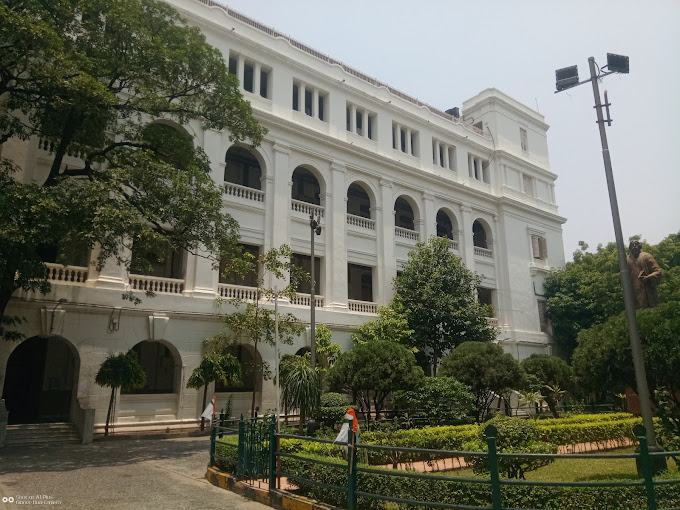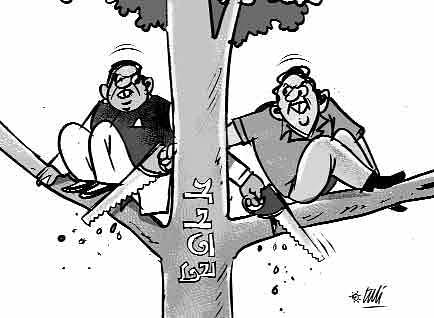
Calcutta University, Darbhanga Building
Bimal Pramanik (Part III)
The booklets which the Samiti had published containing important aspects of the liberation struggle were very effective in various parts of India and abroad. On 9 May the first book was published entitled ‘Bangladesh: The Truth’ written by Dr. Bangendu Ganguli and Dr. (Mrs.) Mira Ganguli.
The following is the list of other publications by the Samiti:
- ‘Conflict in East Pakistan—Background and Prospects’, by Professor Edward S. Mason, Robert Dorffman, Stephen A. Margin. (The data of this book were supplied by the exile Government).
- ‘Bangladesh Through Lens’—An Album of Pictures
- ‘Bangladesh—Throes of a New Life’, edited by Dr. Bangendu Ganguli and Dr. (Mrs.) Mira Ganguli.
- 5. ‘Pakistanism and Bengali Culture’, by Osman Jaman of Chittagong University.
- ‘Bleeding Bangladesh’, edited by Sipra Aditya. This is a picture album on mass-murder.
- ‘Bangladesher Muktiyuddhe’, edited by Professor Jatindranath Chattopadhyay and foreword was written by Annadasankar Ray.
- ‘Muktiyuddhe Bangladesh’ by Professor AsaduzzMn.
- ‘Chhay Dafa Karmasuchi’ (Six Point Programme). This was the sixth point demand of Awami League.
- Satai March 1971 Bangabandhu Sheikh Mujibur Rahmaner Bhasan. (The speech of Bangabandhu Sheikh Mujibur Rahman on 7 March, 1971).
- ‘Muktijoddhader Proti’ jointly edited by Sukumar Biswas on behalf of Bangladesh Teachers’ Association and By Jatindranath Chattopadhyay, on behalf of the Sahayak Samiti.
To gather international help and support the Samiti sent the following representatives to various countries.
- Father P.F. Fallon S.J., Professor of European Languages, Calcutta University was sent in June to Vatican City. He met the Pope and apprised him of the genocide conducted by the General Yahya Khan in East Pakistan. He also visited France, Belgium, Italy, England and West Germany for the same purpose.
- The retired judge of High Court, Calcutta, Hon’ble Mr. A. K. Das visited England in July to apprise the people through various meeting about the genocide and other horrible incidents in Bangladesh.
- Mr. Banshibhai Mehta and Smt. Sushila Mehta of Bombay visited England in July and August and distributed among the teachers, students and journalists the pamphlets and books containing the facts of terror in Bangladesh.
- The noted trade union leader Mr. Shibnath Banerjee visited Afghanistan in October and there he met Badsah Khan, his son the NAP leader Wali Khan, the members of Parliament and the tribal leaders and discussed with them about the freedom struggle of Bangladesh and sought for their help. He also depicted the hurried picture of Bangladesh to the teachers of Kabul University and several editors and journalists.
- Shri Purnendu Ray visited England and America in October and delivered lectures in favour of Bangladesh Liberation War in various meetings attended by University teachers, journalists and noted personalities. At the initiative of the Sahayak Samiti, the University Grants Commission (UGC) Chairman, Professor G.S. Kothari issued a circular to all the universities pleading them to appoint qualified teachers coming from Bangladesh as refugees. Consequently, many of them were appointed as professors and teachers in various universities and teaching institutions.
At the initiative of this Samiti, a medical unit was constituted under the supervision of Smt. Mrinmoyee Bose with the help of the India Red Cross Society and with the personal initiative of Mrs Padmaja Naidu, and collected medicines and other medical equipment. Some members of the Bangladesh Teachers Association also helped in this effort.
Sri Nirod Baran Mukherjee of `Radiant Process’, Shri Ajit Mohan Gupta of ‘Bharat Phototype Studio’ and Sri Barindra Mitra of ‘Good Company’, rendered much help to the Sahayak Samiti in the matter of publication and other works.
I, personally, do not feel it necessary to explain why history of this freedom struggle of Bangladesh has become controversial. A powerful anti-liberation Islamic lobby was able to remove the front-rank leaders of the freedom struggle through merciless killing just within three and a half years of independence. Before the fruit of liberation could reach the people everything went upside down. The phenomenon of the liberation struggle became oblivious after the gruesome murder of Sheikh Mujibur Rahman on August 15, 1975.
(concluded)

